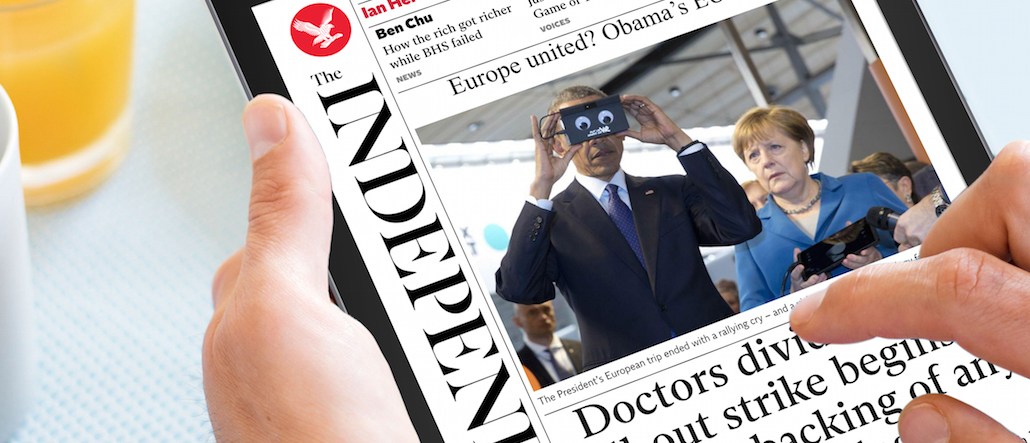
British publisher ESI Media, which owns Independent and The Evening Standard, has 113 million reader profiles and 900 targeting segments it offers advertisers. But with The Independent now online only, the publisher needs new ways to scale and monetize that audience data.
The problem: It’s difficult to differentiate on data strategies when everyone is using the same tools, said ESI Media director of strategic and commercial data Jo Holdaway.
“It’s vital we rejuvenate how we sell,” she said. “When everyone has the same DMP and third-party data it’s hard to stand out. And ensuring that your first-party data is essential, high-yielding, and remains on our site, so no leakage, is critical.”
Here’s a breakdown of some of the ways it’s planning to tackle this:
Giving advertisers access to real-time editorial data
Analytics tools like Chartbeat are 10 a penny now at publishers, though the Independent has been a little late to catch on. It installed Chartbeat a month ago and is already in talks with agencies over how to make that data accessible to them via a real-time dashboard. The agency can then see what topics or stories are trending and create and serve real-time content marketing based on those trends. They’ll also be able to see where readers are spending most of their time on the site, as well as how they’ve arrived there, and tweak their campaigns accordingly.
“We see very different user behaviors depending on whether people have come in via search, when they tend to spend longer, whereas people who visit from social media return to the site on a daily basis,” said Holdaway.
Tightening first-party data leakage
Data leakage — when a third party collects valuable data about a publisher’s audience without its permission — is nothing new. It’s a nightmare to track and control, though not impossible.
The Independent is currently ramping up its programmatic trading, meaning data leakage will become even harder to monitor, said Holdaway. But it’s putting measures in place for its ad ops team to stunt it. “It’s fine if you want to collect our data, but we want to choose who does and why they want it,” said Holdaway. “We’re going to be more vigilant.”
For now those measures are manual: The team will spot-check creative that comes in from programmatic partners and verify creative assets from agencies for direct-sold or native campaigns. Those partners will then be asked to validate why they’re dropping beacons, pixels or cookies if it’s not been agreed as part of the deal. It’s poised to on-board a vendor to automate the process.
Monetizing ad blocker users
The irony for publishers is that ad-blocker users are actually a highly valuable audience and, therefore, monetizable. Only 10 percent of the Independent’s traffic is being ad blocked, far below the U.K. industry average of around 20 percent. But it’s not taking any chances. In a few weeks’ time the paper will roll out its first pop-up messages asking people to whitelist the site, though it won’t block them from the content, yet.
Instead, the Independent’s commercial team is more interested in understanding more about who is whitelisting, and also learn more about the “die-hard” ad blockers themselves, according to Holdaway.
“We’ve seen that the die-hard ad blockers spend longer on the site and consume more pages than the average reader,” she said. “They’re an interesting group and one we at least should market our own products to. We’ll be looking at how to monetize that.”
Subscription and log-in data
The publisher has hired a data analyst to crunch all app data, registration and viewablity data. It’s currently using the registration data to test new personalized email services, using a mix of editorial curated stories, and algorithmically chosen content.
The team has also been scrutinizing how much time people are spending within both paid and free apps, and on the site to see if time-based selling is commercially viable — a tack taken by the Financial Times and the Economist. People are visiting the Independent’s daily edition app twice a day and spending an average 20 minutes in there, with up to 40 pages viewed in each session, according to Holdaway.
“Time-based selling hugely interests us, and we’ve been investigating what time is spent on our apps and site,” she said. “There are more conversations I want to have before formulating a proper plan.”
More in Media

Publishers are hunting for AI prompt data — now they’re starting to get it from third-party companies
Publishers are finally gaining some visibility into AI search, as new prompt data tools crack open a black box.

Digiday+ Research: Publishers’ growing focus on video doesn’t translate to social platforms
Major publishers have made recent investments in vertical video, but that shift is not carrying over to social media platforms.

Technology x humanity: A conversation with Dayforce’s Amy Capellanti-Wolf
Capellanti-Wolf shared insight on everything from navigating AI adoption and combating burnout to rethinking talent strategies.





